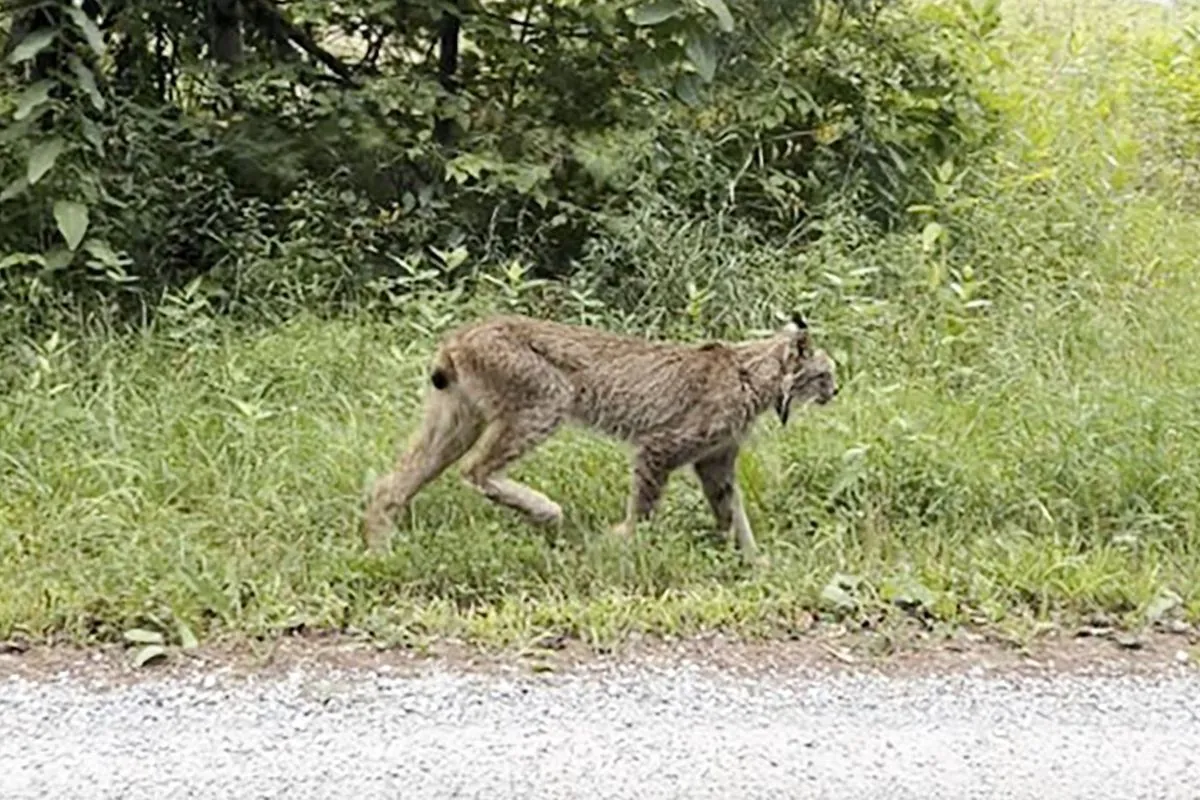In a significant wildlife event, a Canada lynx was recently observed in Shrewsbury, Vermont, marking the first confirmed sighting of this endangered species in the state since 2018. The encounter, which occurred on a Saturday evening four days ago, has generated excitement among wildlife experts due to its unexpected southern location.
A local resident captured video footage of the lynx walking along a rural road, providing valuable evidence for wildlife officials. Brehan Furfey, a wildlife biologist and furbearer project leader with the Vermont Fish and Wildlife Department, emphasized the importance of this sighting, stating, "This newest sighting is especially exciting because the cat was spotted in Rutland County, far south of most confirmed lynx reports in Vermont."
The Canada lynx (Lynx canadensis) is classified as endangered in Vermont and threatened nationally. This medium-sized wild cat, native to North America, has been listed as threatened under the U.S. Endangered Species Act since 2000. The species is known for its distinctive features, including long black ear tufts, a short black-tipped tail, and large paws that act like snowshoes in deep snow.
Vermont's position on the southern edge of the lynx's range makes this sighting particularly noteworthy. The state's northeastern region typically provides the most suitable climate, habitat, and food sources for lynx. These cats are highly adapted to hunting snowshoe hares, which constitute 60-97% of their diet. Both lynx and snowshoe hare populations thrive in young forest habitats with reliable snowpack.
Wildlife experts suspect that the lynx spotted in Shrewsbury may be a male engaging in "dispersal" behavior, seeking to establish its own territory. This behavior allows lynx to cover long distances quickly. It's worth noting that lynx can swim and are known to cross large rivers during dispersal, showcasing their adaptability.
Since 2016, Vermont has received over 160 reports of lynx sightings, with only seven confirmed. The most credible sighting prior to this recent event occurred in Jericho in 2018. These low numbers highlight the rarity of such encounters and the challenges faced by the species.
Canada lynx face numerous threats, primarily due to habitat loss from human development and climate change. Conservation efforts for this species include habitat protection and restoration, as well as comprehensive monitoring programs. These initiatives are crucial for the survival of lynx, which can live up to 14 years in the wild.
As nocturnal and solitary animals, lynx are rarely seen by humans. They communicate through scent marking and vocalizations, including mews, growls, and screams. Adult lynx typically weigh between 18-24 pounds and measure about 3 feet in length, with the ability to run at speeds up to 25 mph over short distances.
This recent sighting in Shrewsbury not only provides valuable data for wildlife researchers but also serves as a reminder of the importance of preserving diverse ecosystems. As climate change continues to impact wildlife habitats, such unexpected sightings may become more frequent, emphasizing the need for continued conservation efforts and public awareness.
